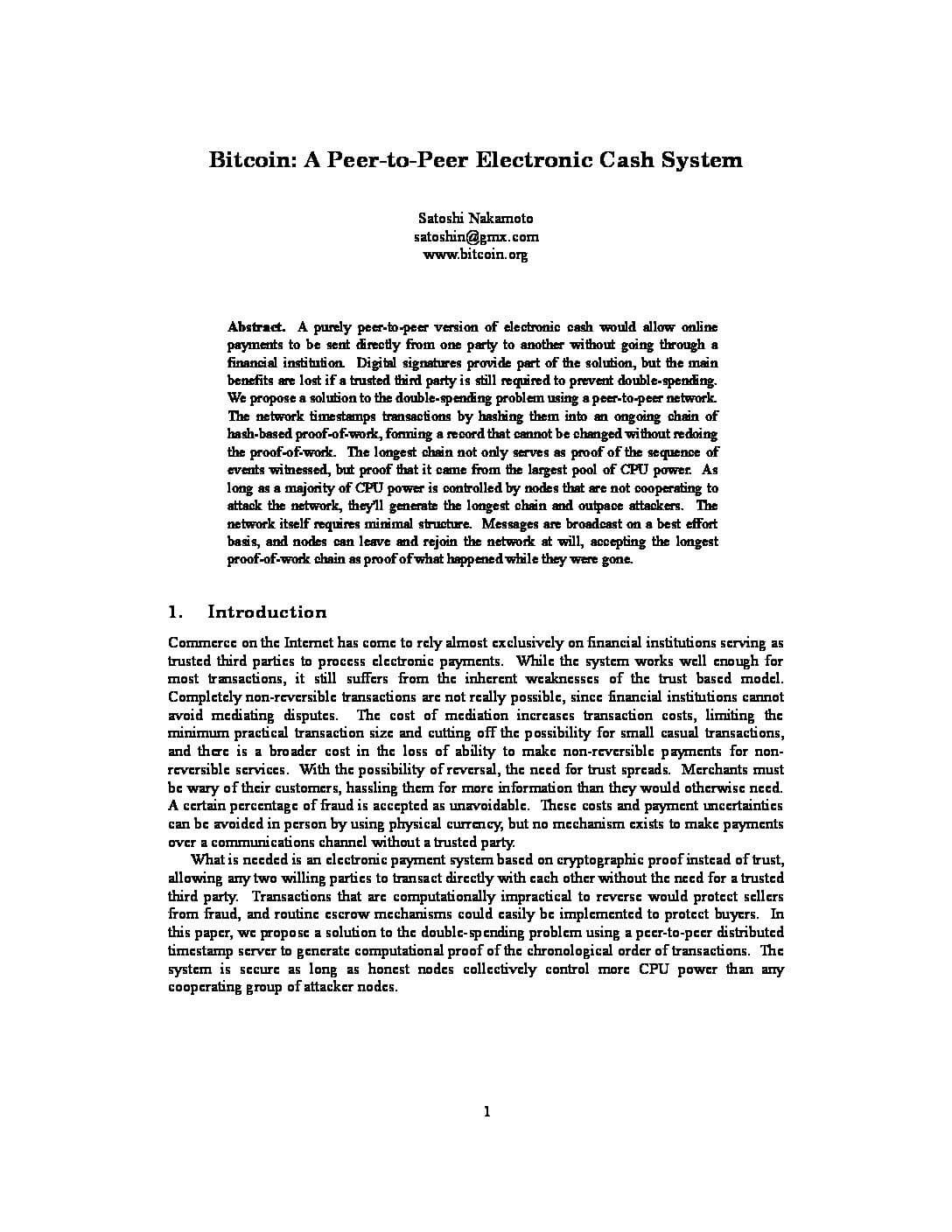Bitcoin has many birthdays
2014-11-02
 A few days ago Bitcoin the “paper” turned 6 years old. It was first announced in a cryptographic mailinglist at metzdowd.com as a “A Peer-to-Peer Electronic Cash System”
It’s content is short and sweet and the entire whitepaper is only 9 pages long with illustrative pictures and examples of how the system works.
A few days ago Bitcoin the “paper” turned 6 years old. It was first announced in a cryptographic mailinglist at metzdowd.com as a “A Peer-to-Peer Electronic Cash System”
It’s content is short and sweet and the entire whitepaper is only 9 pages long with illustrative pictures and examples of how the system works.
Abstract. A purely peer-to-peer version of electronic cash would allow online payments to be sent directly from one party to another without the burdens of going through a financial institution. Digital signatures provide part of the solution, but the main benefits are lost if a trusted party is still required to prevent double-spending. We propose a solution to the double-spending problem using a peer-to-peer network. The network timestamps transactions by hashing them into an ongoing chain of hash-based proof-of-work, forming a record that cannot be changed without redoing the proof-of-work. The longest chain not only serves as proof of the sequence of events witnessed, but proof that it came from the largest pool of CPU power. As long as honest nodes control the most CPU power on the network, they can generate the longest chain and outpace any attackers. The network itself requires minimal structure. Messages are broadcasted on a best effort basis, and nodes can leave and rejoin the network at will, accepting the longest proof-of-work chain as proof of what happened while they were gone. Full paper at: https://www.bitcoin.org/bitcoin.pdf Satoshi Nakamoto
It’s conclusion is as elegant as it’s abstract
Conclusion We have proposed a system for electronic transactions without relying on trust. We started with the usual framework of coins made from digital signatures, which provides strong control of ownership, but is incomplete without a way to prevent double-spending. To solve this, we proposed a peer-to-peer network using proof-of-work to record a public history of transactions that quickly becomes computationally impractical for an attacker to change if honest nodes control a majority of CPU power. The network is robust in its unstructured simplicity. Nodes work all at once with little coordination. They do not need to be identified, since messages are not routed to any particular place and only need to be delivered on a best effort basis. Nodes can leave and rejoin the network at will, accepting the proof-of-work chain as proof of what happened while they were gone. They vote with their CPU power, expressing their acceptance of valid blocks by working on extending them and rejecting invalid blocks by refusing to work on them. Any needed rules and incentives can be enforced with this consensus mechanism.
It did not take long before the paper was turned into code and lunched a few months later in January 2009 which is usually the date we say that Bitcoin was born.
[gview file=”https://test.bt.cx/en/news/wp-content/uploads/2014/11/bitcoin_whitepaper.pdf”]
Ready to start your Bitcoin journey?
BTCX is Sweden's first Bitcoin exchange. With us, you can buy bitcoin quickly and securely. Experience safety and simplicity when investing in the currency of the future!


